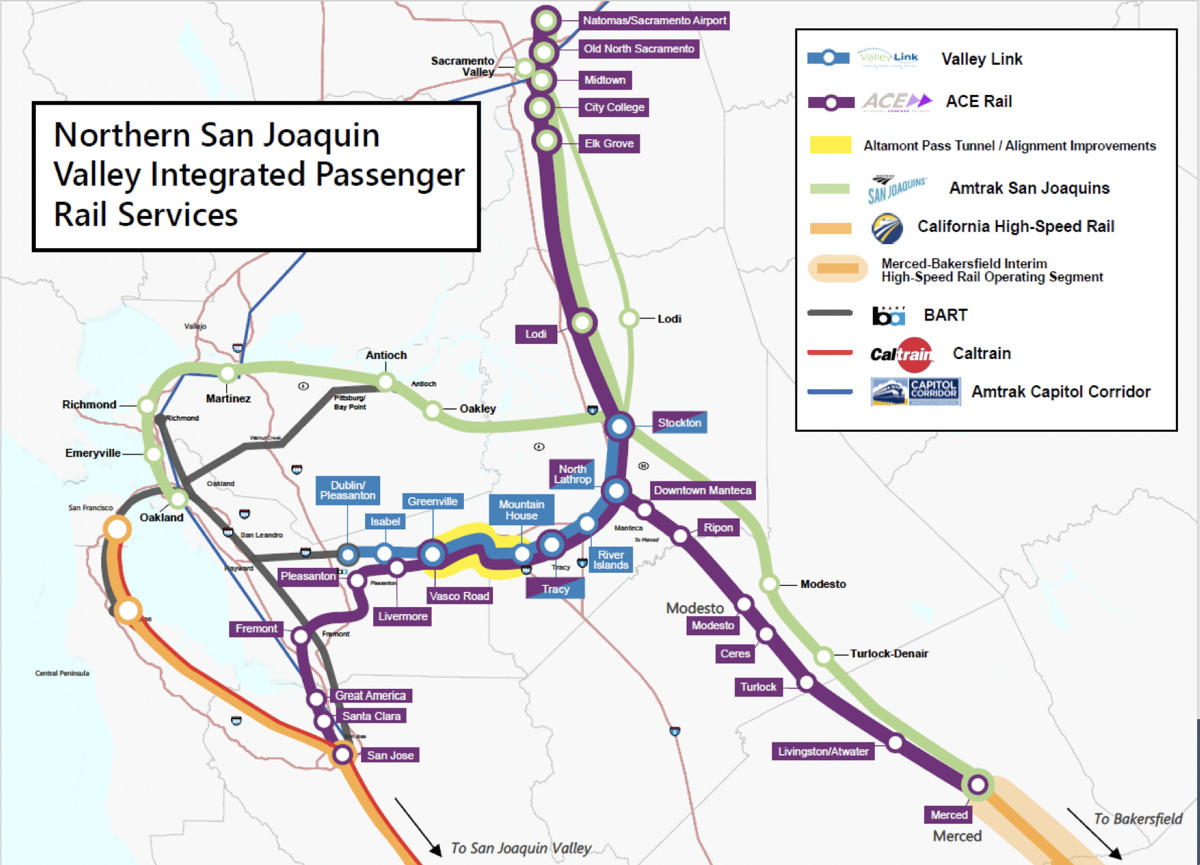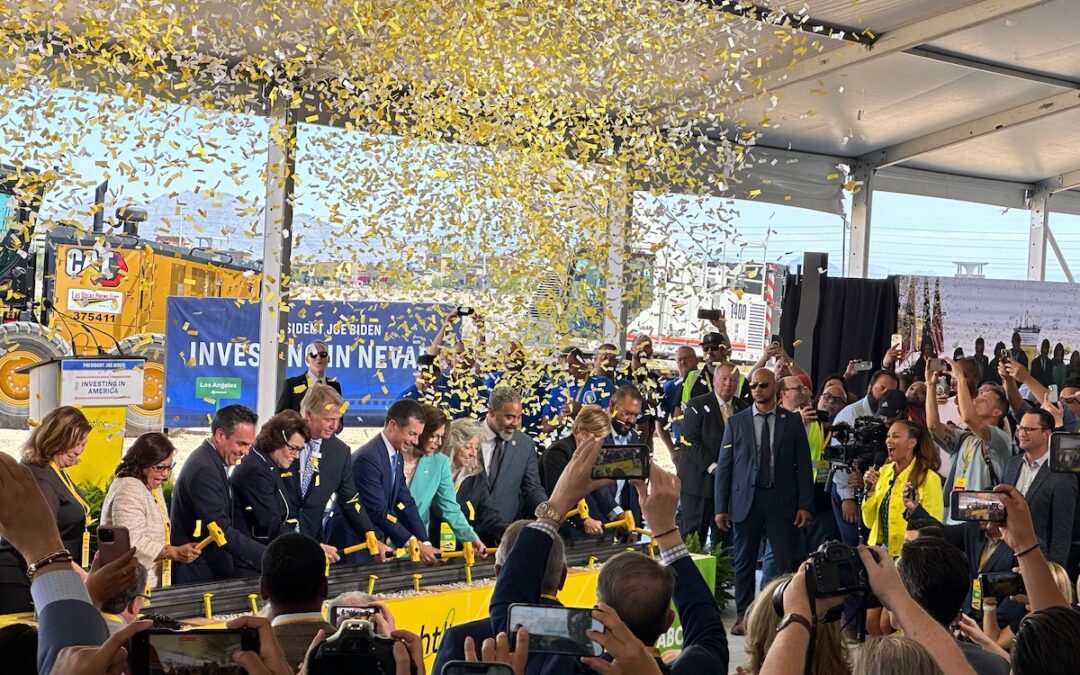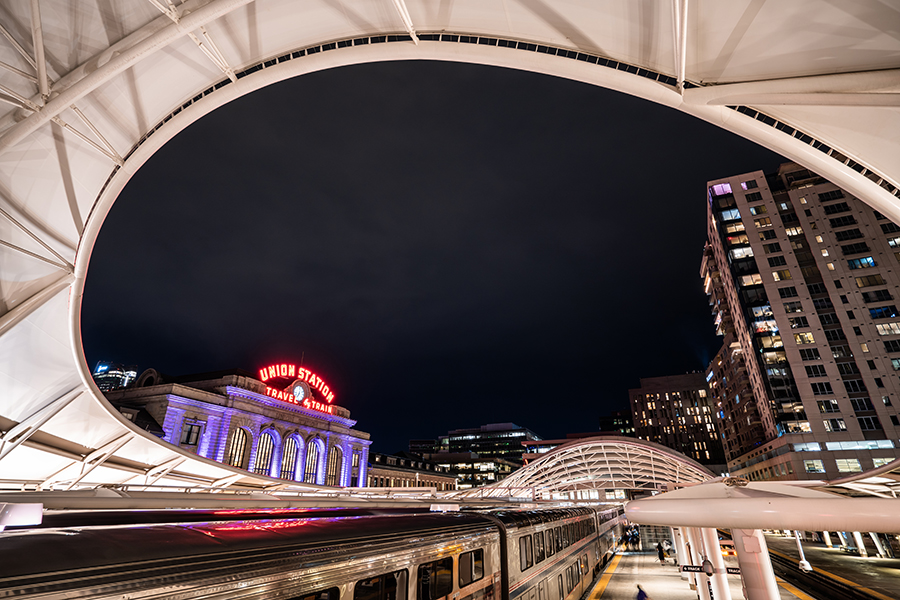The railroad Brightline today broke ground in Nevada on its new Brightline West project. Brightline will use trains traveling up to 200 miles per hour to cut the travel time between Las Vegas and Los Angeles in half. The company already operates successful trains...
Trains have a bright future in California despite recent declines in ridership caused by the pandemic, according to Dan Leavitt, manager of regional initiatives for the San Joaquin Joint Powers Authority (SJJPA). SJJPA is the managing agency for both the Amtrak San Joaquins and Altamont Corridor Express (ACE) rail systems in northern California.
Leavitt spoke to Alliance members and took questions during a recent video call, which you can watch here.
The San Joaquins and ACE systems, which are being upgraded and expanded as part of the Valley Rail Program, will be key links in California’s high-speed rail network. Pre-pandemic, the San Joaquins system carried about 1.5 million passengers annually and ran 7 daily round trips—five from Oakland to Bakersfield (in the southern Central Valley) and two from Sacramento to Bakersfield. ACE ran four daily round trips from the Silicon Valley to the northern Central Valley, serving about 1.1 million passengers annually.
When the upgrades are complete, the two systems will offer frequent trips from the Bay Area and Sacramento to Merced, which is the northern terminus for the first segment of high-speed line. By 2030, the California high-speed rail system plans to operate 18 round trips every day between Merced and Bakersfield, “and our goal is to link every one of those with either an ACE or San Joaquins train at Merced,” according to Leavitt. In the corridors served by ACE and San Joaquins trains, ridership is projected to increase from 2.6 million passengers in 2019 to 8.8 million in 2029.
The high-speed line will slash the travel time between Bakersfield and Merced by about 1.5 hours, making destinations all across the state much more accessible. “This will demonstrate true high-speed rail in this part of the world for the first time,” Leavitt said. “It can then be further expanded in California and, hopefully, other parts of the country.”
Responding to criticisms that the line isn’t being built parallel to Interstate 5–i.e., closer to the coast—Leavitt noted that legislators from the Central Valley have been a driving force behind the project. They view the I-5 route as “something that bypasses key communities in the Valley,” Leavitt said, “and that once again the Valley would be hurt by investment that doesn’t serve the Valley.
“There’s been a lot of talk about how the first segment of high-speed rail is isolated, but we believe that couldn’t be further from the truth,” Leavitt said. He noted that, along with the frequent trains running from Merced to the Bay Area and Sacramento, the system will feature an extensive bus network that coordinates tightly with the southern portions of the high-speed line.
In addition to the San Joaquins and ACE upgrades, SJJPA is managing a grade-separation project in Stockton that will “improve mobility through the busiest, most congested at-grade rail junction in California.” The flyover project, which recently received a $20 million grant from the U.S. Department of Transportation, is key to SJJPA’s plan to increase the frequency of ACE and San Joaquins trains from the Central Valley to the Bay Area and Sacramento. It is currently in the environmental review process.
Leavitt said that advocates for all kinds of trains must band together and defend funding for California’s ongoing high-speed rail project. Legislators have floated the idea of diverting some of the funds earmarked for HSR to upgrade Metrolink, the LA region’s commuter rail system.
“If we don’t stick together, we’re going to have problems,” Leavitt said. “High speed rail is threatened right now in the Assembly. You have a number of members who are looking to take money away. There’s no question: Metrolink should get additional funds. But not with high-speed rail money. If this money is taken away, we believe that will be the end of [plans for] high-speed rail connecting northern and southern California.”
The Latest from HSRA
Our Latest Blog Posts
Check out the latest news, updates, and high speed rail insights from our blog!




